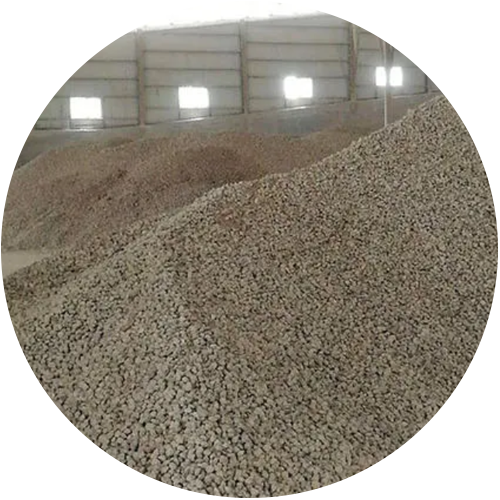1. The difference of raw material composition: electric furnace ramming material is mainly an unshaped refractory material made of aggregate and powder with a certain particle gradation plus binder and additives, which is mainly constructed by manual or mechanical ramming. Ramming materials include corundum ramming materials, high-aluminum ramming materials, silicon carbide ramming materials, carbon ramming materials, silicon ramming materials, magnesia ramming materials, etc. Like the electric furnace bottom ramming material, silicon carbide, graphite, electric calcined anthracite as raw materials, mixed with a variety of ultra-fine powder additives, fused cement or composite resin as a binder made of bulk materials. It is used to fill the gap between the furnace cooling equipment and the masonry or the filler for the masonry leveling layer. Castable is a kind of granular and powdery material made by adding a certain amount of binder to refractory materials. With high fluidity, it is suitable for unshaped refractory materials formed by casting. The three major components of the castable are the main component, the additional component and the impurity, which are divided into: aggregate, powder and binder. Aggregate raw materials include silica, diabase, andesite and waxstone.

2. The difference in the scope of construction: When the electric furnace ramming material is ramming, Luoyang Quantong Kiln (ramming material manufacturer) recommends that you must pay attention to uniform force and smooth construction. Ramming materials are generally used in kiln parts where refractory bricks cannot be built or are difficult to build. The construction of ramming materials is relatively simple, and is used to fill the gap between the furnace cooling equipment and the masonry or the filling material for the leveling layer of the masonry. The castables are mainly used to construct various heating furnace linings and other integral structures. Certain varieties can also be used in smelting furnaces. For example, aluminate cement refractory castables can be widely used in various heating furnaces and other thermal equipment without slag and acid and alkali corrosion. In the parts that are corroded by molten iron, molten steel and molten slag and have high working temperature, such as tapping trough, ladle, blast furnace body, tapping trough, etc., a combination of low calcium and pure high-alumina cement can be used. A refractory castable made of granular and powdery materials with high alumina content and good sintering. For another example, phosphate refractory castables can be widely used in heating furnaces and soaking furnaces for heating metals, as well as coke ovens and cement kilns that directly contact the materials. In some parts of metallurgical furnaces and other vessels that are in direct contact with slag and molten metal, repairing with phosphate refractory castables also has a good effect. To sum it up, the castable can be used for the pouring of key parts of the furnace body, such as the furnace door frame and the vicinity of the feeding port; the molten metal pouring runner is generally cast with castables. After a period of use, the castables will fall off and require regular Patch up the place.
Contact: Manager Hou
Phone:15141721000/18340699933
Fax: 5283555
Customer Service: 0417-5289566
Email: 373633791@qq.com
Address: Nanlou Development Zone,
Dashiqiao City, Yingkou City
message.
Scan and follow